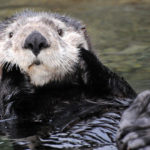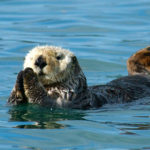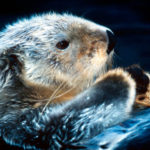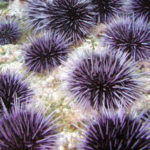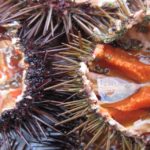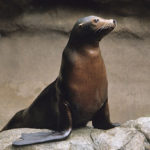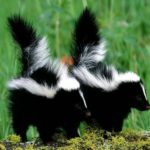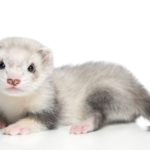Otters
 Otters – predatory animals of the family of cuni, leading a water way of life. In nature, there are 17 species of otters. In the closest relationship to these animals are the sea otters, sometimes called sea otters.
Otters – predatory animals of the family of cuni, leading a water way of life. In nature, there are 17 species of otters. In the closest relationship to these animals are the sea otters, sometimes called sea otters.
In general, otters are not very large animals: body length in most species does not exceed 1 m, and weight 10-12 kg. The exception is the giant otter from South America, in which the body length can reach 1.5 m, and the weight up to 30 kg! Otters have a characteristic for all kuni characters: a very elongated, flexible body, short paws with tenacious claws, a short neck and a flattened head with small ears. Their tail is also long and muscular. Teeth in otters are small, but sharp. A distinctive feature of these animals are swimming membranes on the paws. The fur of all otter species is very short and extremely thick. Such a fur does not pass water and is highly valued. Coloration of all otters is brown with a lighter throat and belly.
Otters live on all continents, except Australia. These animals are very closely related to water and settle along the banks of rivers with a mild course. However, the cat-otter from South America prefers sea coasts, and the African Congolese otter settles in mountain rivers with a rapid current.
Most often, otters live in burrows, sometimes they occupy caves by the water or make a den in the thickets of reeds. All otters live singly, except for a short period, when the female is raising young. Only giant otters form permanent family groups of 10-15 individuals. Otters occupy permanent sites that are tagged and guarded against the invasion of neighbors. In case of lack of food, otters may roam, for example, an ordinary otter may pass 10-15 km a day in the winter, which is very much for an animal with such short paws.
All species of otters feed mainly on fish, sometimes supplementing it with crustaceans, mollusks, bird eggs or ground rodents. These animals are quite voracious and search for food spend a lot of time. In the water, otters are extraordinarily clever: they swim quickly, dive deeply and can hold their breath for several minutes. Underwater, these animals move like loaches, bending the body, tumbling over and overturning. Before the dexterity of otters, not a single fish will survive! The otters are so successful hunters that when they are saturated they often fish for the game – then they release it, then they catch it again.
In the absence of fish, otters like to tumble in the river and in general, spend a lot of time in the water, even cleaned there. The otters devote a lot of time to their toilet, because their heat-conducting properties depend on the purity of their furs. Otters of the temperate zone are not afraid of frosts and even dive into the water even at low temperatures.
The otters multiply once a year, usually the breeding season occurs in the spring (in northern species) or the beginning of the rainy season (in African otters). In the ordinary and other otters of the temperate zone, an interesting phenomenon is observed: after fertilization, the development of the embryo ceases (this is called the latent phase, that is, the latent phase), and then continues again.
The latency period can last up to 270 days! Thus, the female can bring offspring in January and in April next year. In the brood there are 2-4 cubs. They are born blind and helpless, they only see it in a month. Young people stay with their mother for a long time, mastering the difficult art of water hunting.
Depending on the locality where this or that otter species lives, its enemies may be wolves, crocodiles, jaguars or birds of prey that can catch an otter distanced from the river. But the main enemy of otters is hunger. A clever otter can catch any fish, but is helpless before its absence. Therefore, these animals are found only in the deaf and untouched corners of nature, where the proximity of people and water pollution do not undermine fish stocks.
In general, the otters suffered very badly from the person’s hand. The unique otter fur, which is considered the most durable fur in the world, made these animals an object of insatiable hunting. In many places, the populations of this beast are undermined by fishing, and some otter species are on the verge of extinction. The situation is aggravated by the fact that the otters can not be raised in captivity on an industrial scale (as mink, for example) because of the specifics of their biology, although these animals are very smart and easily tamed. Only general protection can save these wonderful animals.

